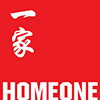The scope encompasses various aspects of creating and maintaining websites, ensuring that they are not only aesthetically pleasing but also user-friendly, accessible, and functional across different devices and platforms.
1. Design and Layout
- Visual Aesthetics: Crafting the look and feel of a website, including the choice of colours, fonts, and layout, to ensure the site's design aligns with the client's brand identity and user expectations.
- User Interface (UI) Design: Focusing on the usability and the visual interface of a website, ensuring that users can interact with it easily and intuitively.
- Responsive Design: Ensuring websites are accessible and usable on a variety of devices, including desktops, tablets, and smartphones, by adapting the layout to different screen sizes.
2. User Experience (UX)
- Usability: Improving the site's architecture and navigation to make it more user-friendly and to enhance the overall user experience.
- User Research and Testing: Conducting research and user testing to understand the needs and behaviours of the site's target audience, and using this information to inform design decisions.
3. Technical Skills
- HTML/CSS: Understanding the foundational technologies of the web, including HTML for structure and CSS for style.
- Content Management Systems (CMS): Primarily WordPress, to build and manage digital content.
- Basic Programming: While not always required, having knowledge of JavaScript and other front-end technologies can significantly enhance a web designer's capability to create dynamic and interactive websites.
4. Project Management and Communication
- Team Collaboration: Working closely with other team members.
- Time Management: Managing multiple projects simultaneously, adhering to deadlines and project timelines.
5. SEO and Digital Marketing
- Search Engine Optimisation (SEO): Incorporating SEO best practices into website design to improve the site's visibility on search engines.
- Social Media Integration: Designing elements that integrate with social media platforms to enhance user engagement and reach.
6. Continuous Learning
- Trends and Technologies: Keeping up to date with the latest design trends, technologies, and industry standards to remain competitive and innovative.





